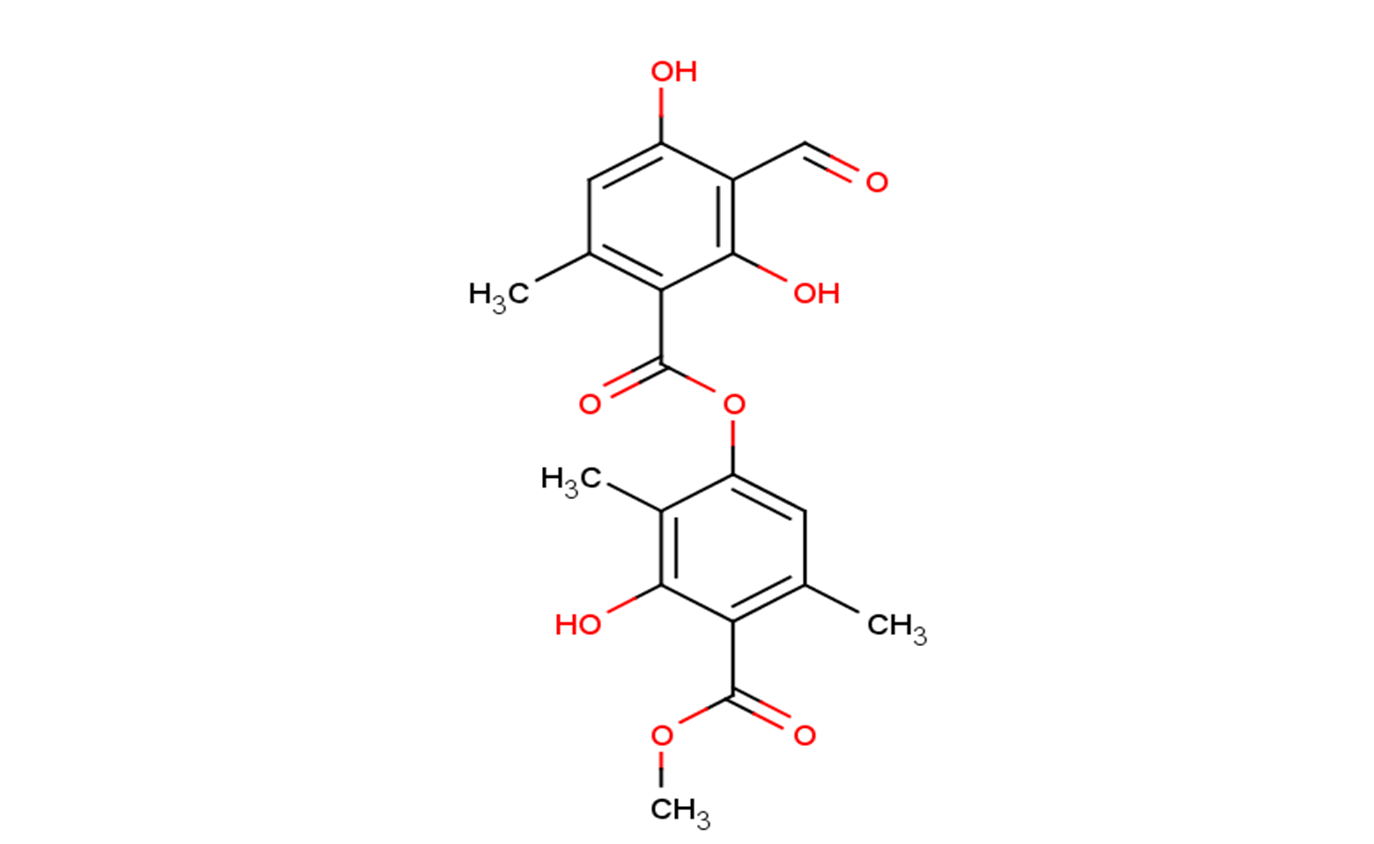
Atranorin
CAS No. 479-20-9
Atranorin( —— )
Catalog No. M24429 CAS No. 479-20-9
Atranorin shows significant antinociceptive and antiinflammatory activities, it has a relevant redox-active action, acting as a pro-oxidant or antioxidant agent depending on the radical.
Purity : >98% (HPLC)
 COA
COA
 Datasheet
Datasheet
 HNMR
HNMR
 HPLC
HPLC
 MSDS
MSDS
 Handing Instructions
Handing Instructions
| Size | Price / USD | Stock | Quantity |
| 5MG | 239 | In Stock |


|
| 10MG | 354 | In Stock |


|
| 25MG | 593 | In Stock |


|
| 50MG | 845 | In Stock |


|
| 100MG | 1143 | In Stock |


|
| 200MG | Get Quote | In Stock |


|
| 500MG | Get Quote | In Stock |


|
| 1G | Get Quote | In Stock |


|
Biological Information
-
Product NameAtranorin
-
NoteResearch use only, not for human use.
-
Brief DescriptionAtranorin shows significant antinociceptive and antiinflammatory activities, it has a relevant redox-active action, acting as a pro-oxidant or antioxidant agent depending on the radical.
-
DescriptionAtranorin shows significant antinociceptive and antiinflammatory activities, it has a relevant redox-active action, acting as a pro-oxidant or antioxidant agent depending on the radical, also, it will exert cytoprotective effects on cells under oxidative stress induced by H(2)O(2).
-
In Vitro——
-
In Vivo——
-
Synonyms——
-
PathwayProteasome/Ubiquitin
-
TargetEndogenous Metabolite
-
RecptorEndogenous Metabolite|NO Synthase
-
Research Area——
-
Indication——
Chemical Information
-
CAS Number479-20-9
-
Formula Weight374.4
-
Molecular FormulaC19H18O8
-
Purity>98% (HPLC)
-
SolubilityDMSO:10 mM
-
SMILESO=C(OC1=CC(C)=C(C(OC)=O)C(O)=C1C)C2=C(C)C=C(O)C(C=O)=C2O
-
Chemical Name——
Shipping & Storage Information
-
Storage(-20℃)
-
ShippingWith Ice Pack
-
Stability≥ 2 years
Reference
1.Clastogenic effect of atranorin, evernic acid, and usnic acid on human lymphocytes.Nat Prod Commun. 2014 Apr;9(4):503-4.
molnova catalog



related products
-
2-Picolinic acid
PCL 016 is a topical antiviral agent which inhibits adenovirus replication in rabbit.
-
trans-Vaccenic acid
trans-Vaccenic acid is a precursor for the synthesis of saturated fatty acid in the rumen and of conjugated linoleic acid at the tissue level.
-
L-Homocystine
Homocystine is the double-bonded form of homocysteine but it occurs only transiently before being converted to the harmless cystathionine via a vitamin B6-dependent enzyme. Increasing evidence supports a role for an elevation of homocysteine in schizophrenia.



 Cart
Cart
 sales@molnova.com
sales@molnova.com


